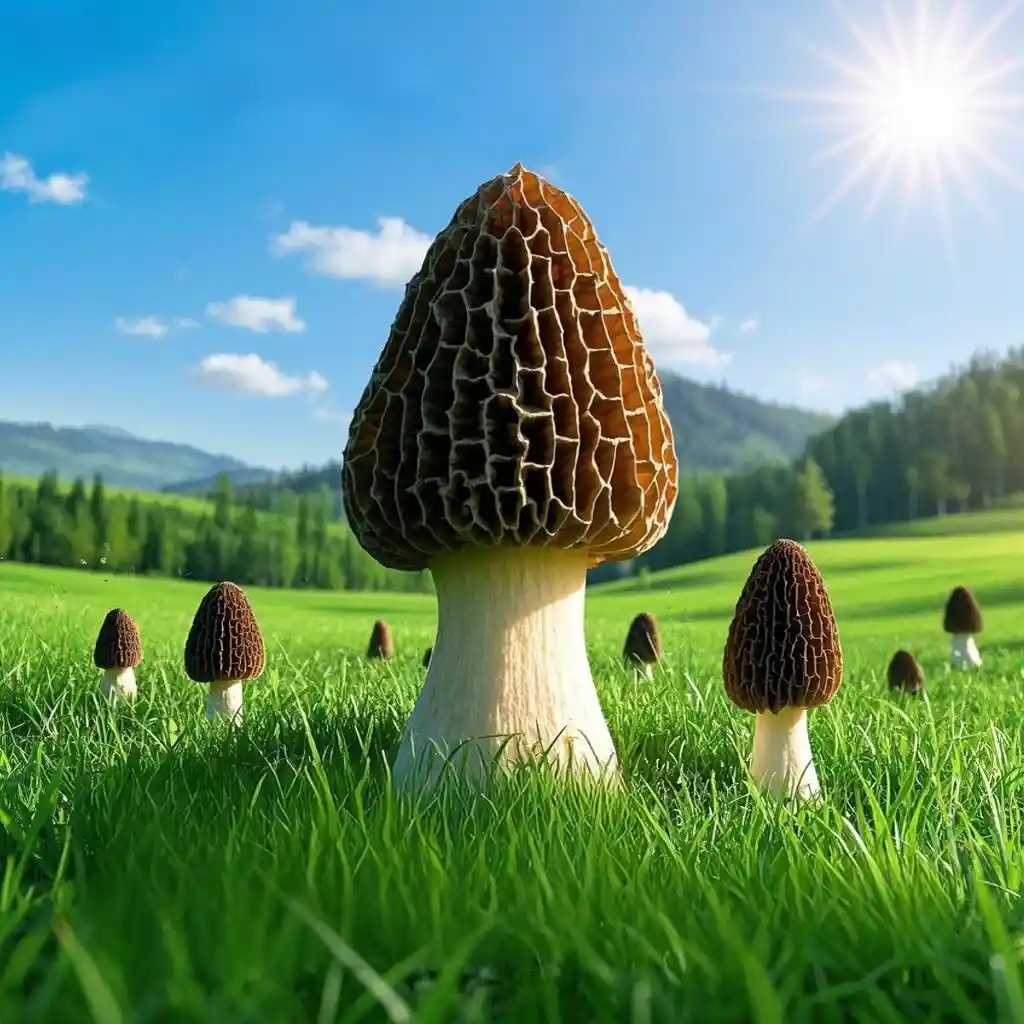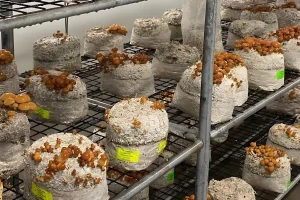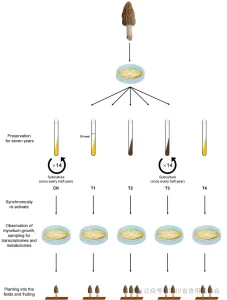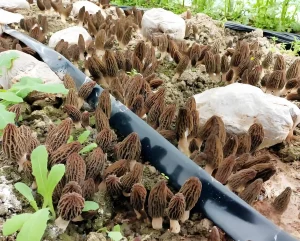I. The Critical Challenge Facing the Morchella Industry
As a premium edible fungus cherished globally for its unique flavor and nutritional value, Morchella cultivation has become a vital income source for rural households in China. However, the industry faces an insidious threat – white mold disease caused by Paecilomyces variotii. This soil-borne pathogen disrupts mycelial growth, causes fruit body malformation, and leads to significant yield losses. Current chemical fungicides are ineffective against P. variotii while harming Morchella and soil ecosystems, creating an urgent need for sustainable microbial-based solutions.

II. Innovation from Sichuan’s Research Team
The Microbiology & Ecology Engineering Research Center at the Sichuan Academy of Agricultural Sciences’ Edible Fungi Institute has pioneered a groundbreaking approach. Their study, published in the top-tier journal Biology and Fertility of Soils , reveals how inoculating Pseudomonas chlororaphis rebalances soil microbiomes to suppress white mold disease. Lead author Dr. Yang Yu and corresponding author Dr. Hao Tan report this breakthrough as a major advance in eco-friendly disease management.
III. Mechanism of Action
1. Microbiome Reconstruction in Diseased Soil
In heavily infested continuous cropping fields, researchers introduced P. chlororaphis and tracked microbial dynamics using:
- Amplicon sequencing: Reduced P. variotii relative abundance by 68% while increasing Morchella mycelial biomass by 42%
- Metagenomic analysis: Downregulated fungal virulence genes (laccase, cellulase) by 55% and upregulated biocontrol genes (chitinase, protease) by 73%
- qPCR quantification: Demonstrated 92% reduction in P. variotii absolute counts
2. Field Trial Results
- Yield improvement: +35% per hectare
- Disease reduction: Incidence dropped from 78% to 19%
- Quality preservation: Reduced infected tissue by 81%
IV. Scientific & Industrial Significance
1. Ecological Insight
This study unravels novel interactions between:
- Bacteria (P. chlororaphis)
- Pathogenic microfungi (P. variotii)
- Cultivated macrofungi (Morchella)
It establishes the principle that mycorrhizosphere microbiome modulation can control soil-borne diseases, advancing microbial ecology theory.
2. Commercial Potential
The technology offers multiple advantages:
- Environmentally friendly: Avoids chemical residues
- Cost-effective: Reduces fungicide use by 100%
- Sustainable: Restores soil health for continuous cropping
This provides a scientific foundation for developing microbial inoculants applicable across edible fungi sectors.
V. Future Directions
Dedicated to promoting global food security through microbial innovation, the research team is:
- Optimizing P. chlororaphis formulations for commercial production
- Expanding trials to other edible fungi species
- Collaborating with international partners for technology transfer
As a leading Chinese exporter of premium mushrooms, DRMushroom.cn is committed to delivering safe, sustainable products. Visit www.drmushroom.cn to explore our full range of microbiome-enhanced Morchella and other gourmet fungi.
More:
- 2025: The Year Agriculture Enters the AI Era – A New Wave of Transformation on the Horizon IAgricultural AI Revolution
- Algarikon Zero Project: How a Spanish Firm Transforms Invasive Algae for Edible Mushroom Cultivation
- 🔍 Research Uncovers Key Mechanisms of Morel Strain Degradation
- Spain: Edible Mushrooms Found to Alleviate the “Salty” Dilemma of the Meat Industry
- Yunnan’s Morel Mushroom Industry: Current Status and Prospects


